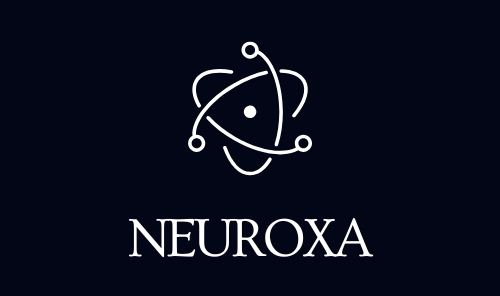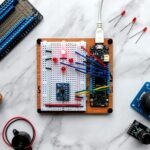Introduction: The End of “Writing Code”
For twenty years, the primary bottleneck in software production was the speed at which a human could type valid syntax. In 2025, that bottleneck has vanished. The introduction of Large Language Models (LLMs) into the DevOps pipeline has fundamentally altered the definition of “software engineering.” We are no longer writing code; we are architecting intent.
- Introduction: The End of “Writing Code”
- The Landscape of AI Coding Assistants in 2025
- 1. GitHub Copilot Enterprise
- 2. GitLab Duo and the “Agentic” Shift
- 3. Amazon Q (formerly CodeWhisperer)
- The “Trust Paradox” and The New Workflow
- Shift Left: AI in DevSecOps
- Measuring ROI: DORA Metrics 2.0
- The Future: From “Copilot” to “Autopilot”
- Conclusion: The 10x Organization
The data supports this seismic shift. According to GitHub’s 2025 Octoverse Report, developers pushed nearly 1 billion commits in 2025, a 25% year-over-year increase driven largely by AI assistance. However, the conversation in the boardroom is shifting from “novelty” to “Net Revenue Retention” (NRR). CTOs are no longer asking if AI works; they are asking how it impacts the bottom line.
This article provides a technical and financial deep dive into the state of DevOps automation. We will explore how tools like GitHub Copilot Enterprise, GitLab Duo, and Amazon Q are not just “auto-complete on steroids” but are becoming autonomous agents that reduce the Software Development Life Cycle (SDLC) by up to 40%.
The Landscape of AI Coding Assistants in 2025
The market has consolidated into a “Big Three” battle for the Integrated Development Environment (IDE). For enterprise buyers, choosing the right platform is a decision that impacts security compliance and cloud lock-in.
1. GitHub Copilot Enterprise
Microsoft’s first-mover advantage has matured into a full ecosystem. In 2025, Copilot is no longer just suggesting lines of JavaScript. It is indexing your entire private repository.
- Context Awareness: Copilot now understands “proprietary context.” If a developer asks, “How do we handle authentication in the billing service?”, Copilot reads the internal documentation and existing codebase to provide an answer specific to that company’s architecture, not just generic StackOverflow snippets.
2. GitLab Duo and the “Agentic” Shift
GitLab has positioned itself aggressively in the “Agentic AI” space. According to their 2025 Global DevSecOps Report, 89% of executives expect autonomous agents to become the industry standard within three years.
- Root Cause Analysis: Unlike simple code generators, GitLab Duo can be triggered when a pipeline fails. It analyzes the error logs, identifies the specific commit that broke the build, and proposes a fix automatically. This reduces the “Mean Time to Recovery” (MTTR), a critical metric for service reliability.
3. Amazon Q (formerly CodeWhisperer)
For organizations heavily invested in AWS, Amazon Q offers a financial competitive moat: Java Upgrade Agents. One of the most expensive tasks in enterprise IT is upgrading legacy Java 8 applications to Java 17 or 21. Amazon Q Agents can autonomously refactor thousands of lines of code, updating dependencies and syntax with minimal human oversight. This saves millions in “Technical Debt” repayment.
The “Trust Paradox” and The New Workflow
While adoption is skyrocketing—Stack Overflow’s 2025 Survey indicates 84% of developers use AI tools—trust is plummeting. The survey reveals a “Trust Paradox” where 46% of developers explicitly distrust the accuracy of AI output, yet use it daily.
This has forced a change in the professional workflow. The role of the Senior Engineer has shifted from “Creator” to “Auditor.”
The “Generate and Verify” Loop
In the old waterfall model, a developer spent 4 hours writing code and 1 hour testing it. In the 2025 AI-assisted model, the developer spends 10 minutes generating the code and 3 hours verifying it against edge cases.
- The Risk: “Hallucinations” in code are dangerous. An AI might import a package that doesn’t exist (a hallucination) or, worse, import a malicious package with a similar name (a security vulnerability).
- The Mitigation: High-performing teams are implementing “AI Guardrails.” These are automated policies in the CI/CD pipeline that block any AI-generated code that references external libraries not present in the approved “Golden Image” artifact repository.
Shift Left: AI in DevSecOps
Security has traditionally been a roadblock. The security team runs a scan after the code is committed, finds a vulnerability, and forces the developer to rewrite it. This loop is expensive. AI allows for “Extreme Shift Left.”
Real-Time Vulnerability Remediation
Tools like Snyk and SonarQube have integrated AI that doesn’t just flag a bug; it writes the patch.
- Scenario: A developer accidentally introduces a SQL Injection vulnerability in a Python script.
- The AI Response: Before the developer even saves the file, the IDE assistant highlights the insecure line and offers a one-click “Fix” that parametrizes the query.
- The Financial Impact: Fixing a bug in the IDE costs roughly $80 in engineering time. Fixing that same bug after it has been deployed to production costs upwards of $10,000 in incident response and patching.
Measuring ROI: DORA Metrics 2.0
How does a VP of Engineering justify the $39/user/month cost of these tools? The answer lies in the DORA (DevOps Research and Assessment) metrics, updated for the AI era.
The 2025 DORA Report by Google Cloud highlights a correlation between AI adoption and “Deployment Frequency.” However, it warns of a dip in “Change Failure Rate” if quality controls are not automated.
The New KPI: “Code Churn vs. Value Stream”
- Legacy Metric: Lines of Code (LOC). This is now a vanity metric, as AI can generate infinite lines of garbage.
- 2025 Metric: Pull Request (PR) Cycle Time.
- The Data: Atlassian’s 2025 State of Developer Experience reports that teams using AI coding assistants see PR cycle times drop by 30%. The AI creates the PR description, summarizes the changes for the reviewer, and even auto-generates the unit tests. This eliminates the administrative friction that usually delays a merge.
The Future: From “Copilot” to “Autopilot”
We are currently in Phase 2 of AI development (Assistants). We are rapidly entering Phase 3 (Agents).
Autonomous QA Engineers
Startup platforms and major players are building “Headless QA Agents.” These AI agents browse a web application like a human user. They click buttons, fill out forms, and attempt to break the site. Unlike a Selenium script which breaks when a CSS selector changes, the AI “sees” the page visually. If the “Buy Now” button moves to the left, the AI still finds it. This reduces the maintenance cost of automated testing suites by nearly 90%.
Infrastructure-from-Code
The next frontier is the collapse of Terraform and Ansible scripts. Instead of writing 500 lines of YAML to provision a server, the developer writes: “Deploy this container to a high-availability AWS cluster with a Redis cache.” The AI Agent generates the Infrastructure as Code (IaC), deploys it, and verifies the security group settings in real-time.
Conclusion: The 10x Organization
The concept of the “10x Developer” was always controversial. In 2025, AI has democratized competence. A junior developer with Copilot is now performing at the level of a mid-level engineer from 2022.
However, the competitive advantage does not come from the tool itself—it is a commodity available to everyone. The advantage comes from the Operating Model. The companies winning high-CPC bids and enterprise contracts today are those that have restructured their entire engineering culture around “Verification” rather than “Creation.” They have invested in the automated testing infrastructure required to catch the speed of AI generation.
For the decision-maker, the takeaway is clear: AI automation is not a way to reduce headcount. It is the only way to handle the exponential complexity of modern software without increasing headcount linearly.
Source List
- GitLab:2025 Global DevSecOps Report: The Economics of Software Innovation (2025)
- Google Cloud (DORA):State of AI-Assisted Software Development 2025 (2025)
- Link: DORA Report 2025
- GitHub:The Octoverse Report 2025: AI Leads TypeScript to #1 (2025)
- Link: GitHub Octoverse 2025
- Atlassian:State of Developer Experience 2025: AI Adoption & Friction (2025)
- Gartner:Magic Quadrant for AI Code Assistants 2025 (2025)
- Stack Overflow:2025 Developer Survey: AI Trust and Usage Trends (2025)









